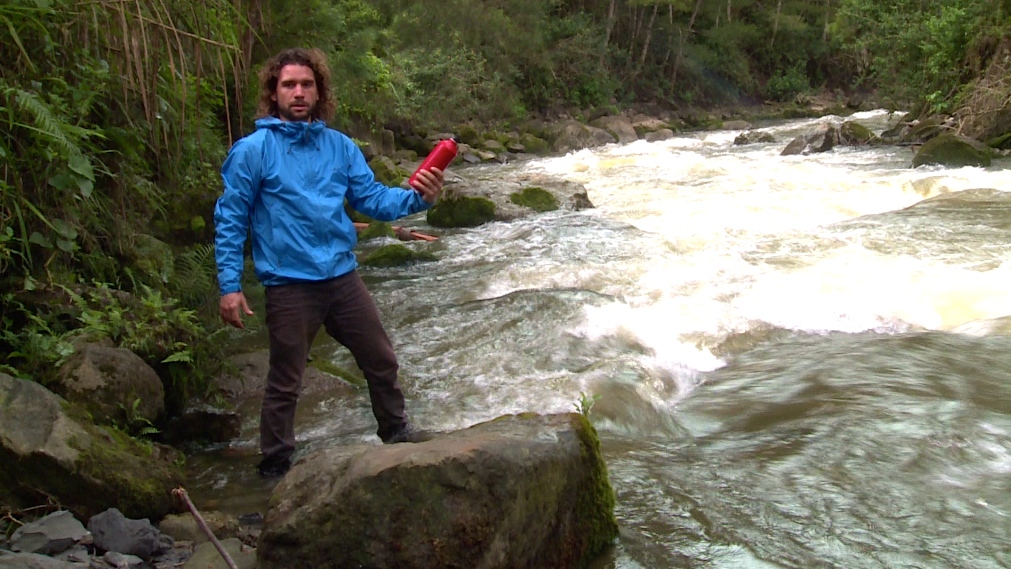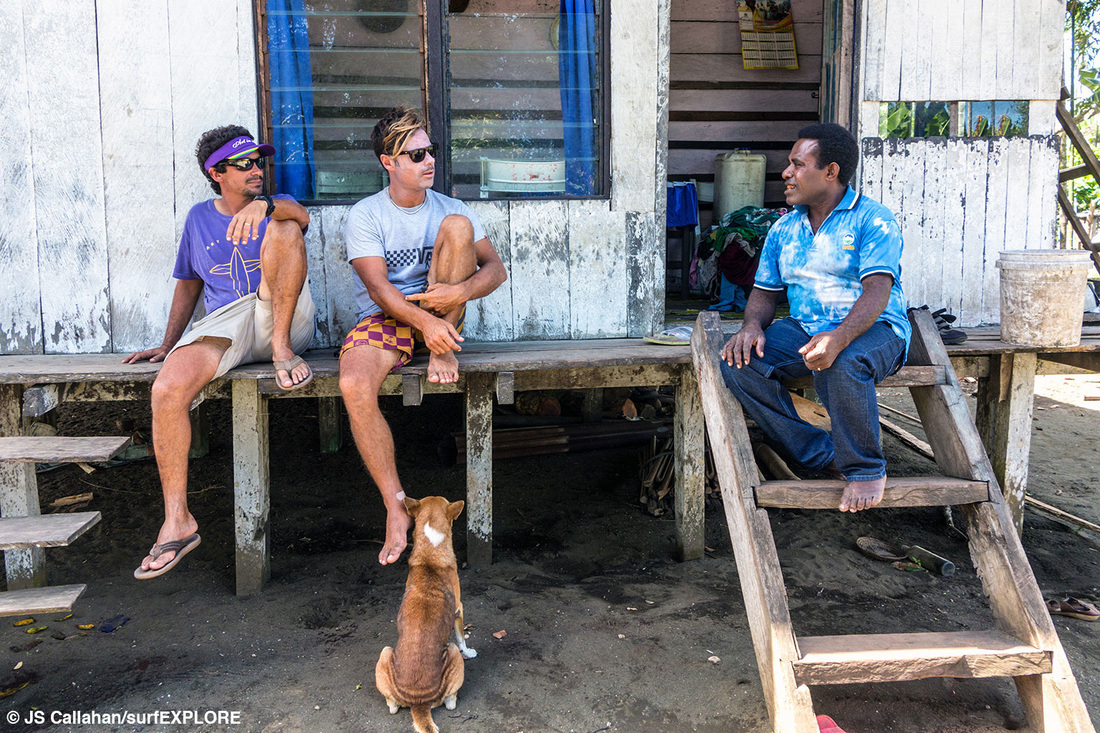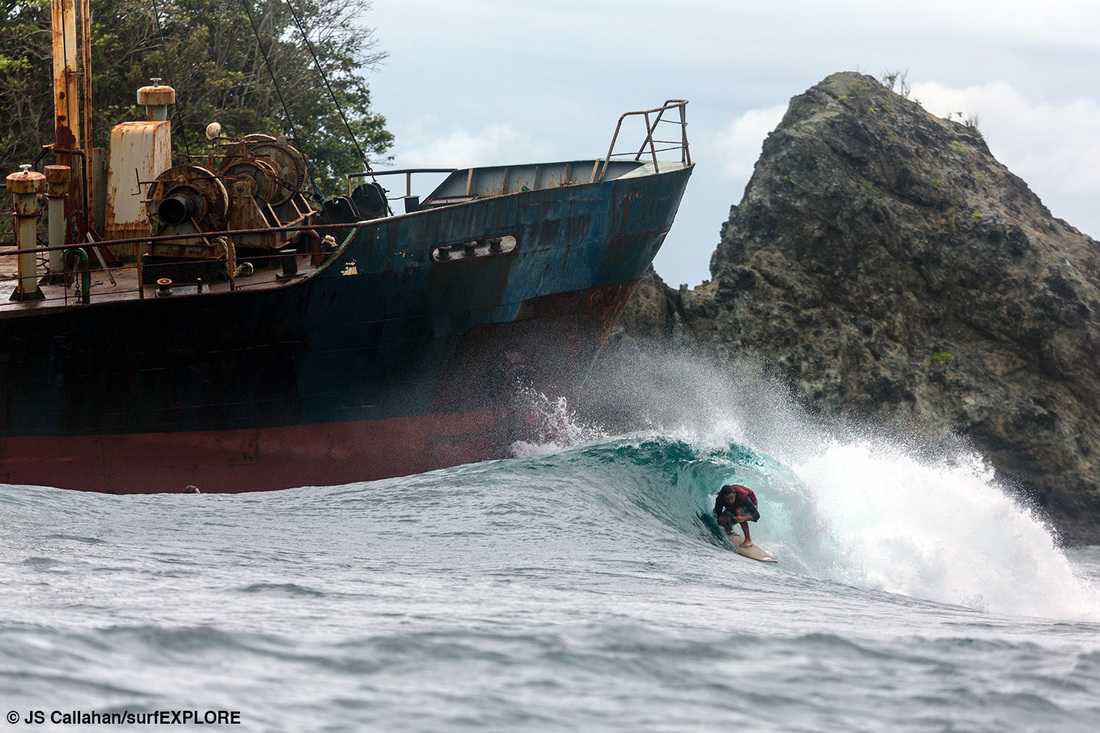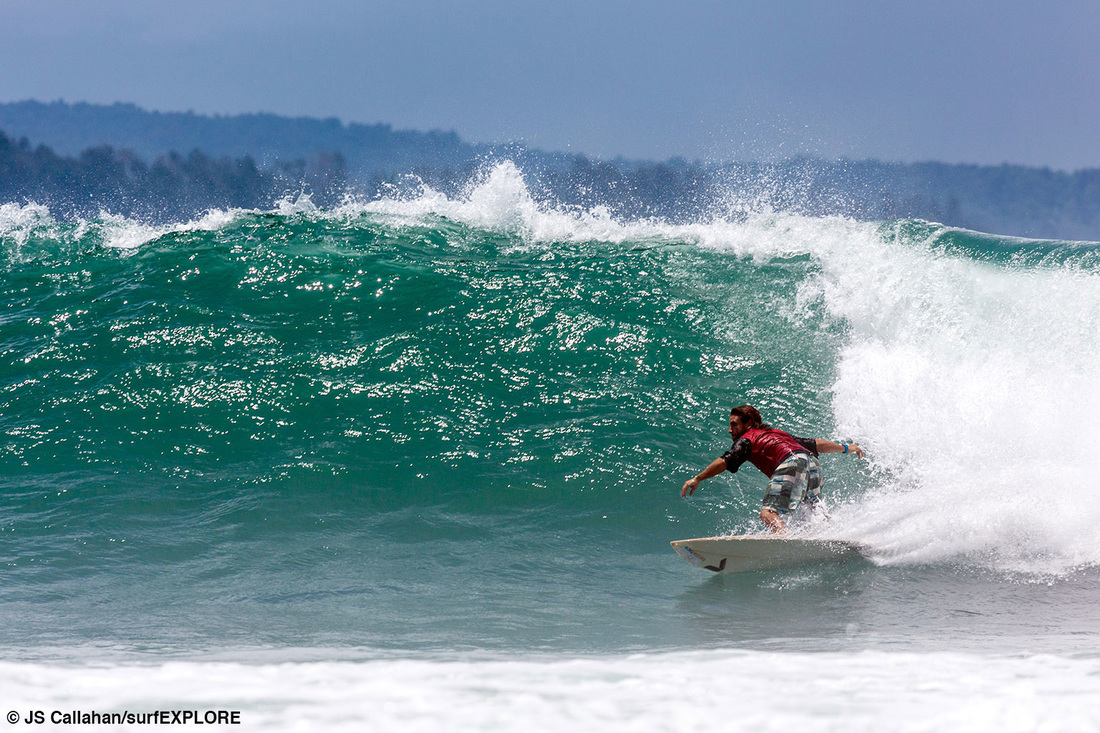By John Seaton Callahan
ASC Microplastics Adventurer
Papua Province on the island of New Guinea is a wild and remote area. Poor infrastructure and the simmering conflict between native Papuan and the Indonesian government have restricted development.
While exploring the coastline, our surfEXPLORE team met a cross-section of local residents, including tribal people with little involvement or concern for the 21st century, betel-nut chewing indigenous Papuan people who have lived in this area continuously for roughly 30,000 years, quite a few trans-migrasi ethnic Malay Asian Indonesians who’ve received government assistance to leave crowded areas like Java and Bali and resettle in Papua.
What we did not see was a single Caucasian foreigner.
SurfEXPLORE is a multi-national group who travel to some of the world’s more remote and exotic locations seeking undiscovered surfing waves. Our core team is French surfer Erwan Simon, British longboard champion Sam Bleakley, Italian surfer Emiliano Cataldi, and me, Hawaiian photographer John Seaton Callahan. This was our fifth project in Pacific Indonesia, and it remains one of our favorite places to travel, explore and surf.
When we contacted the Tourism Official in Sarmi, a large town on the coast known as “Kota Ombak,” or “City of Waves” in Bahasa, the woman there said they recorded 24 foreign visitors in all of 2014.
We had researched the coastline for several months prior, and we found that some of our marked areas did have good waves, some did not, and we found several waves in unexpected places!
ASC Microplastics Adventurer
Papua Province on the island of New Guinea is a wild and remote area. Poor infrastructure and the simmering conflict between native Papuan and the Indonesian government have restricted development.
While exploring the coastline, our surfEXPLORE team met a cross-section of local residents, including tribal people with little involvement or concern for the 21st century, betel-nut chewing indigenous Papuan people who have lived in this area continuously for roughly 30,000 years, quite a few trans-migrasi ethnic Malay Asian Indonesians who’ve received government assistance to leave crowded areas like Java and Bali and resettle in Papua.
What we did not see was a single Caucasian foreigner.
SurfEXPLORE is a multi-national group who travel to some of the world’s more remote and exotic locations seeking undiscovered surfing waves. Our core team is French surfer Erwan Simon, British longboard champion Sam Bleakley, Italian surfer Emiliano Cataldi, and me, Hawaiian photographer John Seaton Callahan. This was our fifth project in Pacific Indonesia, and it remains one of our favorite places to travel, explore and surf.
When we contacted the Tourism Official in Sarmi, a large town on the coast known as “Kota Ombak,” or “City of Waves” in Bahasa, the woman there said they recorded 24 foreign visitors in all of 2014.
We had researched the coastline for several months prior, and we found that some of our marked areas did have good waves, some did not, and we found several waves in unexpected places!
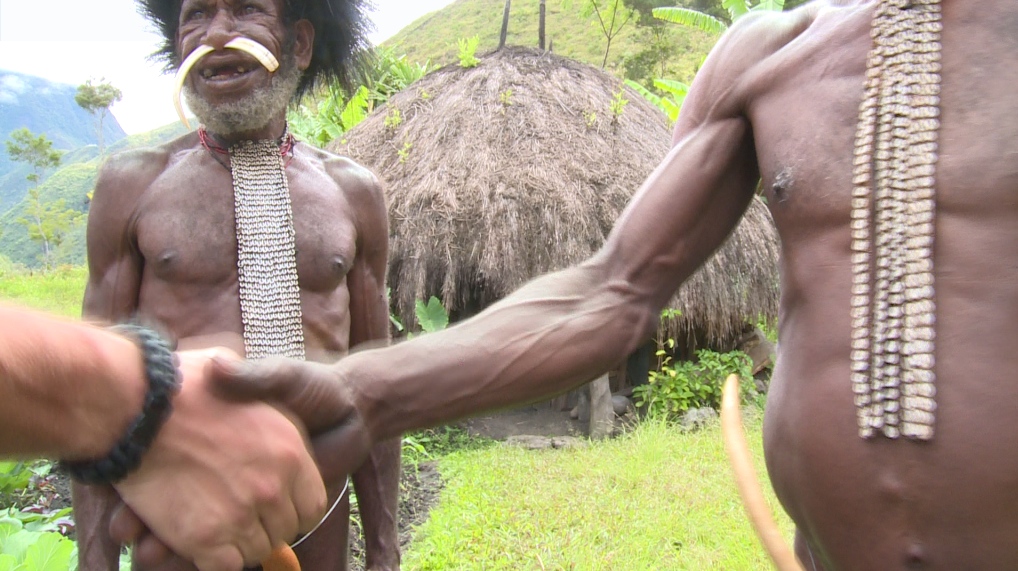
Before the rest of the surfEXPLORE team arrived, Erwan spent a week trekking in the Baliem Valley, near the town of Wamena. After hiking in for two days into the Papuan highlands, he met and stayed with members of the Dani tribe. “The people are really friendly, and in the most remote places they are curious but happy to see foreigners,” he said. The Dani subside on agriculture, hunting and fishing, and the older men still wear the Koteka gourd. (Photo by Erwan Simon)
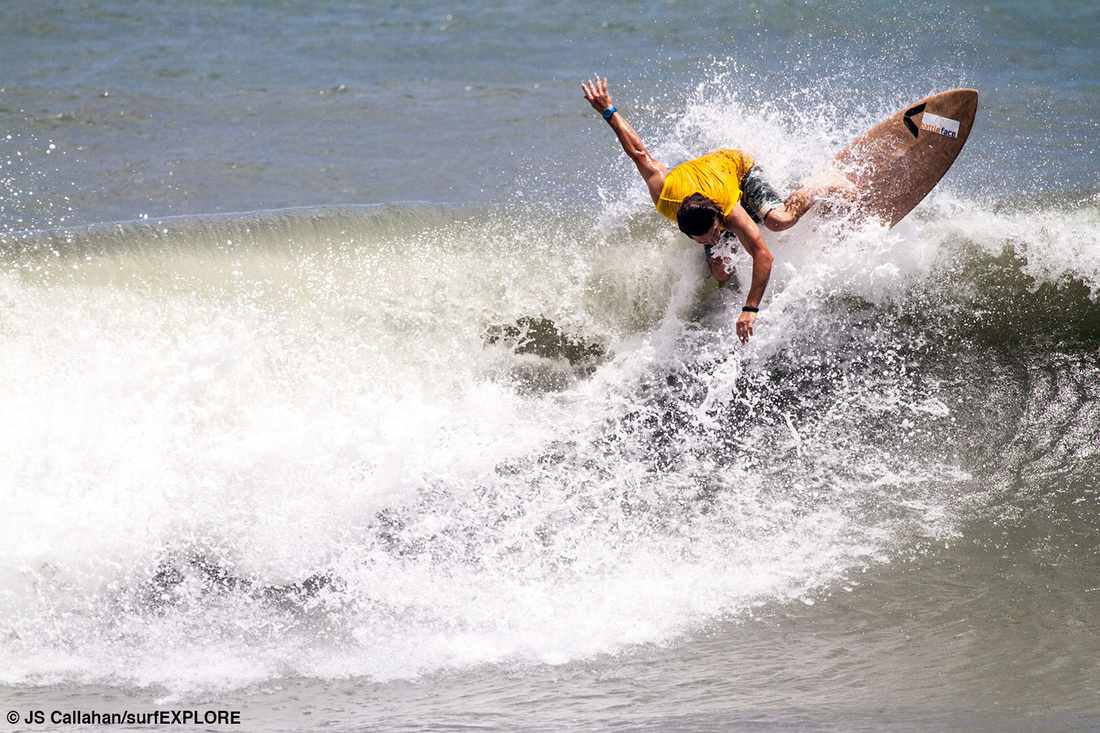
Erwan washes some of the dust off after a long drive at a beach break near Sarmi. “Not a very good surfing location, but we had just arrived and the wind was a favorable offshore direction at this river mouth, so it was a good opportunity to get wet,” John says. “This wave broke close to the beach, so our Indonesian cameraman Joko could also film some action material.” (Photo by JS Callahan)
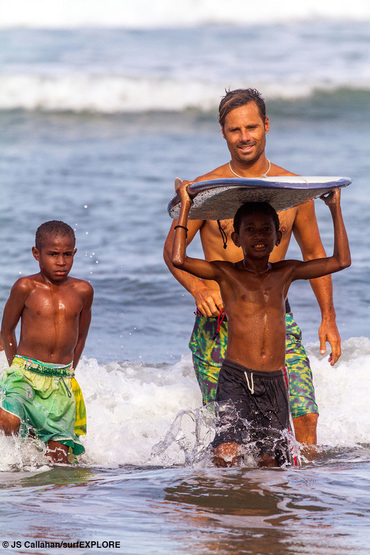
The team hangs with the local kids at a river mouth near the large village of Sarmi. “Although the waves were not very good, it was a great opportunity to film and have some fun with the kids,” John says. “It is unlikely these kids have had any contact with surfers, but they’re in the water every day and already riding waves on pieces of wood, so the transition to modern surfboards is easy for them.” (Photo by JS Callahan)
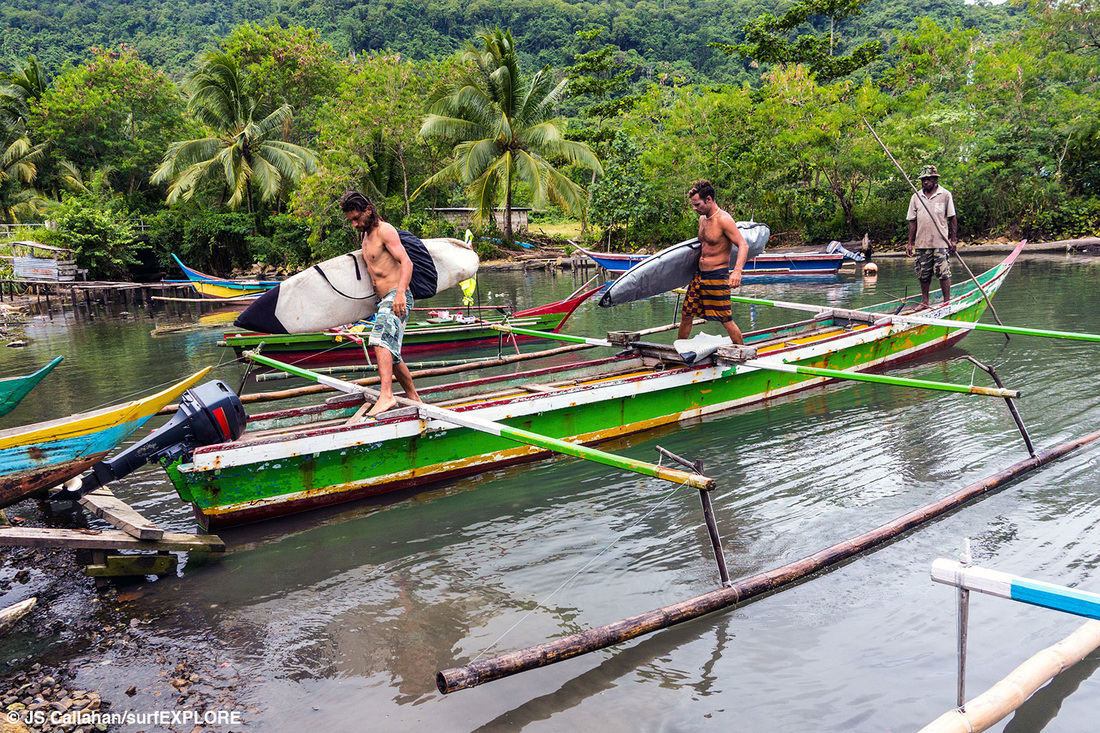
“This local outrigger was our standard boat and method of access to many waves that were not drivable due to bad roads, damaged bridges or no road at all,” John said. “With a single 40-horsepower outboard motor and an accommodating captain, we could range quite far up and down the coast.” (Photo by JS Callahan)
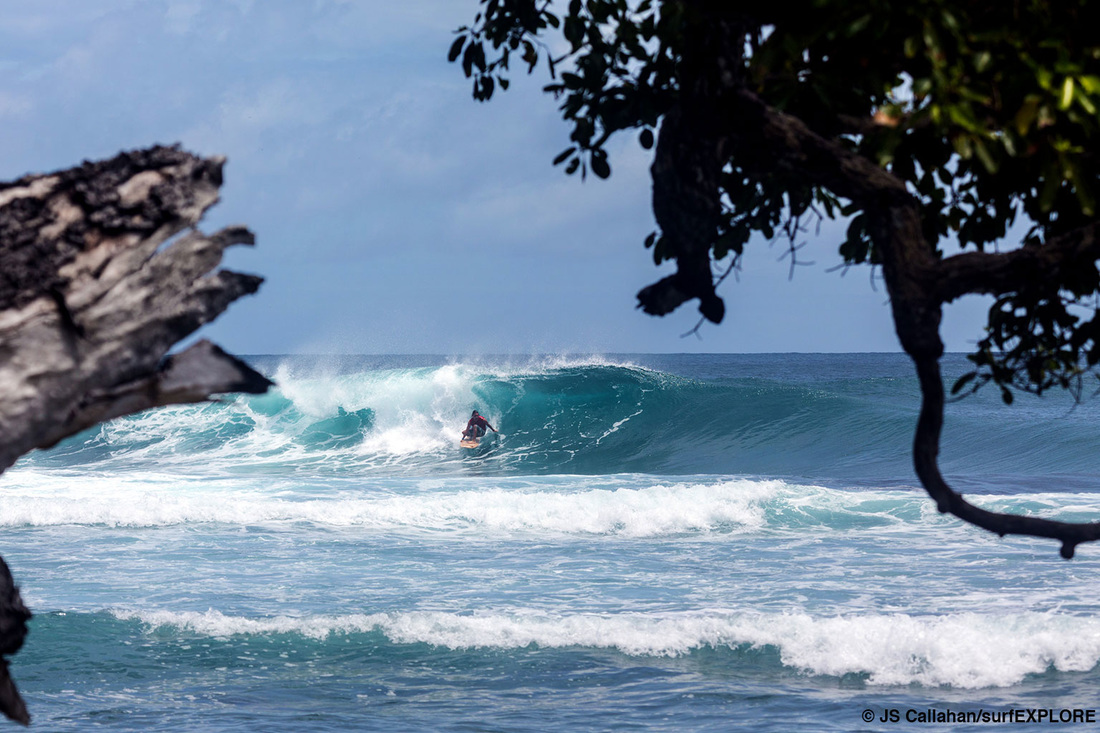
Erwan surfs near an offshore island that the team accessed by boat from Sarmi. “The swell was too big for the location where we thought we’d find a wave on a nearby island, so we freestyled down the coast of a nearby and much larger island toward the only village,” John says. They stopped when the coast angle become favorable for an offshore wind, and found a narrow channel through the reef to access the beach. “Once we were in front of the wave, we could see it was good—really good.” (Photo by JS Callahan)
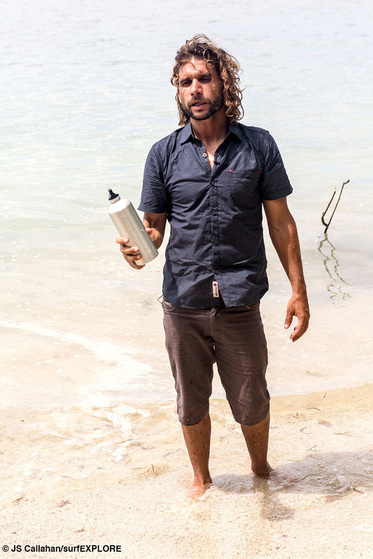
Erwan takes an ASC sample on the coastline of Papua Province. While the surfEXPLORE team was on the beach, a local gentleman appeared and explained it was the site of a battle in 1944 between the Japanese Imperial Army and the US Navy, in which hundreds of Japanese soldiers were killed in landing craft by attacking US Navy carrier-based planes. Not much has happened in the area since, which is very remote even by Papuan standards, John says. (Photo by JS Callahan)
Find more about the ASC Microplastics Project on our website, our Field Notes blog, Facebook, Twitter and Instagram. Learn more about surfEXPLORE at surfexplore.info.

